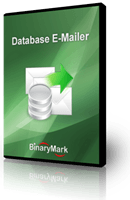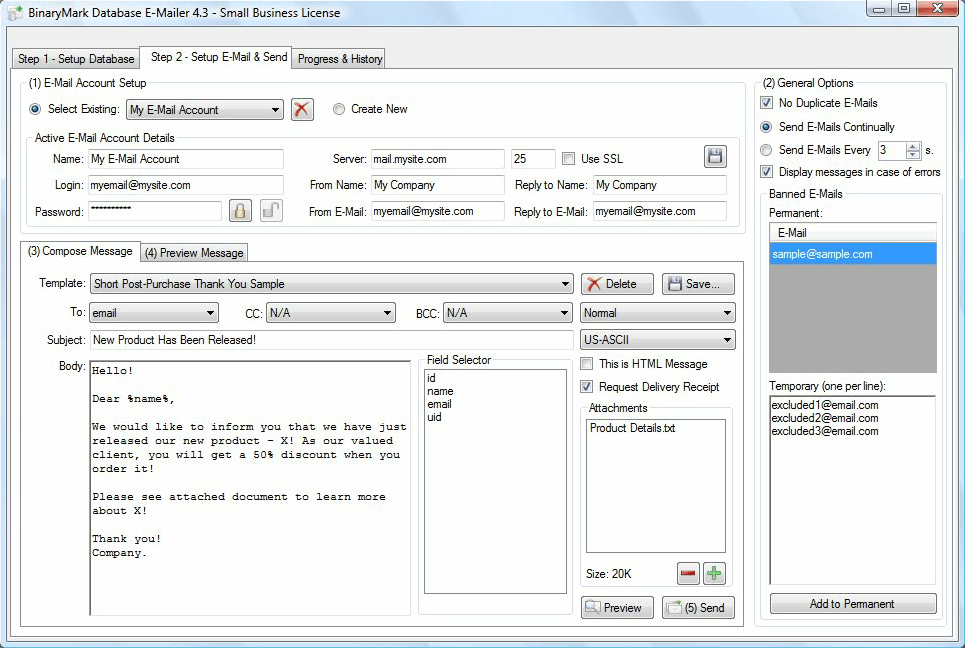How Database E-Mailer Works
Step 1
Step 2
Step 3
Send-out E-Mails
Finally the program will generate personalized e-mails replacing the placeholders in your message template with real data, and it will then send the generated e-mail messages using e-mail account and settings of your choice.
Top Features
Other Features
- Import data from any ODBC-compliant data sources: MS Access, SQL Server, Oracle, MySQL, SQLite...
- Save data sources, so you won't need to re-enter connection information again
- Use SELECT SQL statements to retrieve data from databases
- Save SELECT SQL statements for future use
- Manually remove and modify retrieved records from the program by editing them in a data grid
- Define default values for placeholders, in case record would be empty or NULL
- Support for SMTP e-mail accounts
- Set up and save e-mail accounts for future use
- Sensitive data that you decide to save such as e-mail account and data source passwords can be encrypted
- Support for message templates
- Support for attachments
- Support for various message encodings
- TO, CC, and BCC e-mail fields
- Preview e-mail messages before they are sent
- Send e-mails continuously or every specified amount of time
- Avoid duplicate e-mail being sent
- History of e-mail campaigns
- Much more!
Useful Resources
- FirstSQL.com - Learn the basics of SQL SELECT statements that you can use in Database E-Mailer to achieve maximum results.
- ConnectionStrings.com - Get connection strings for any database system to use with Database E-Mailer.




